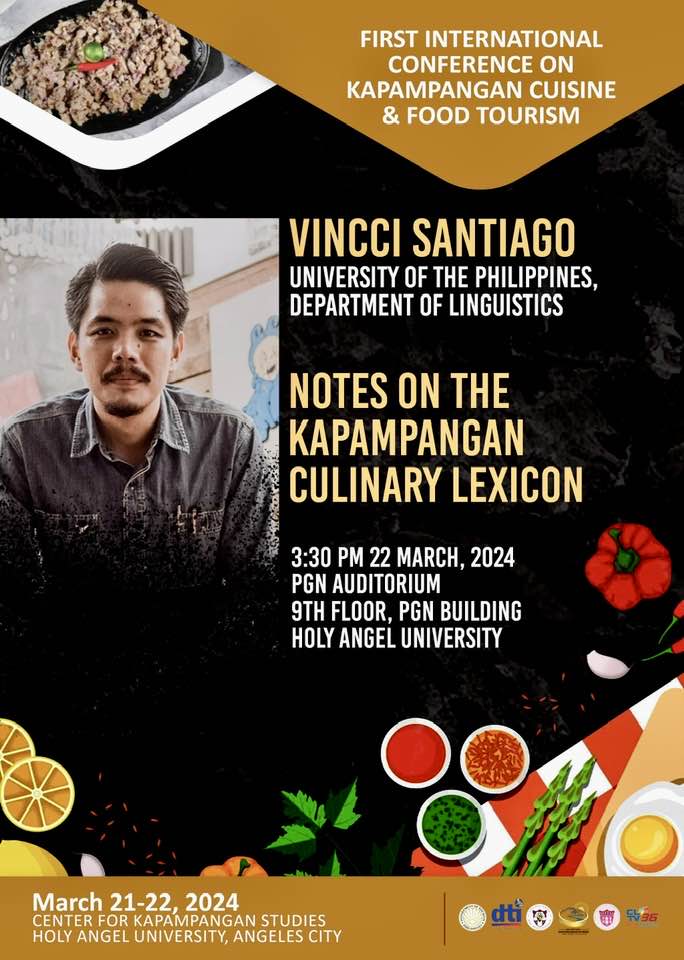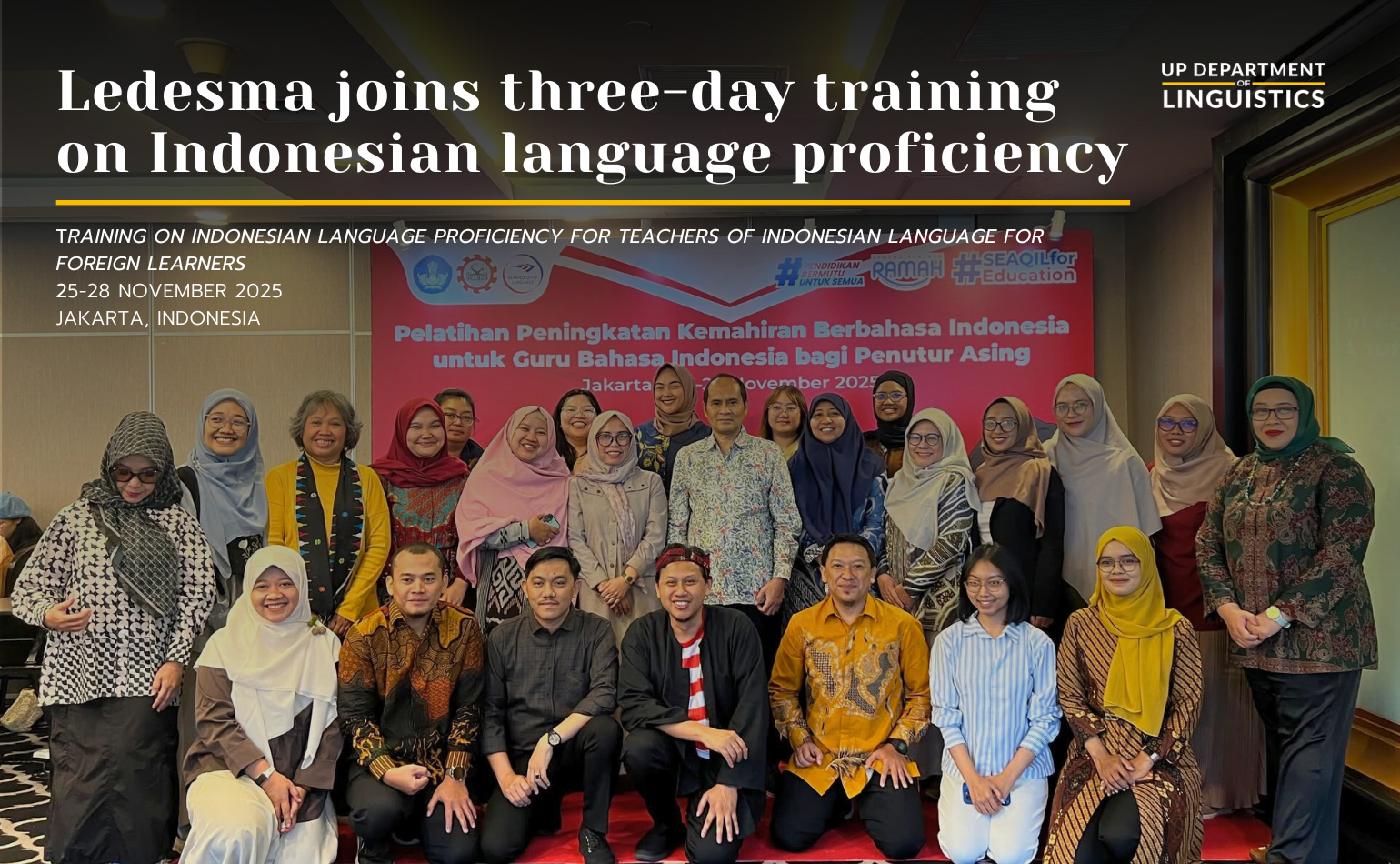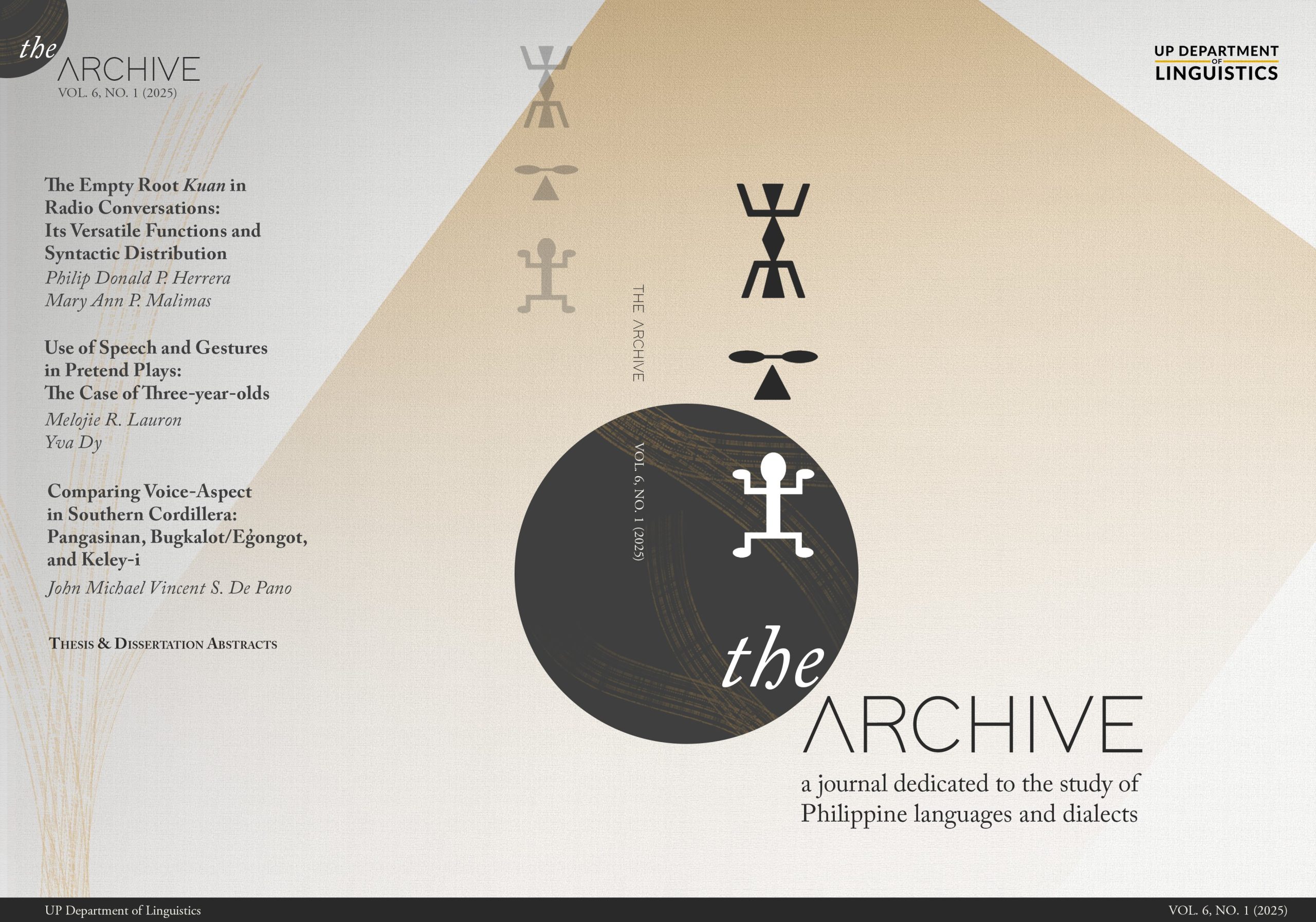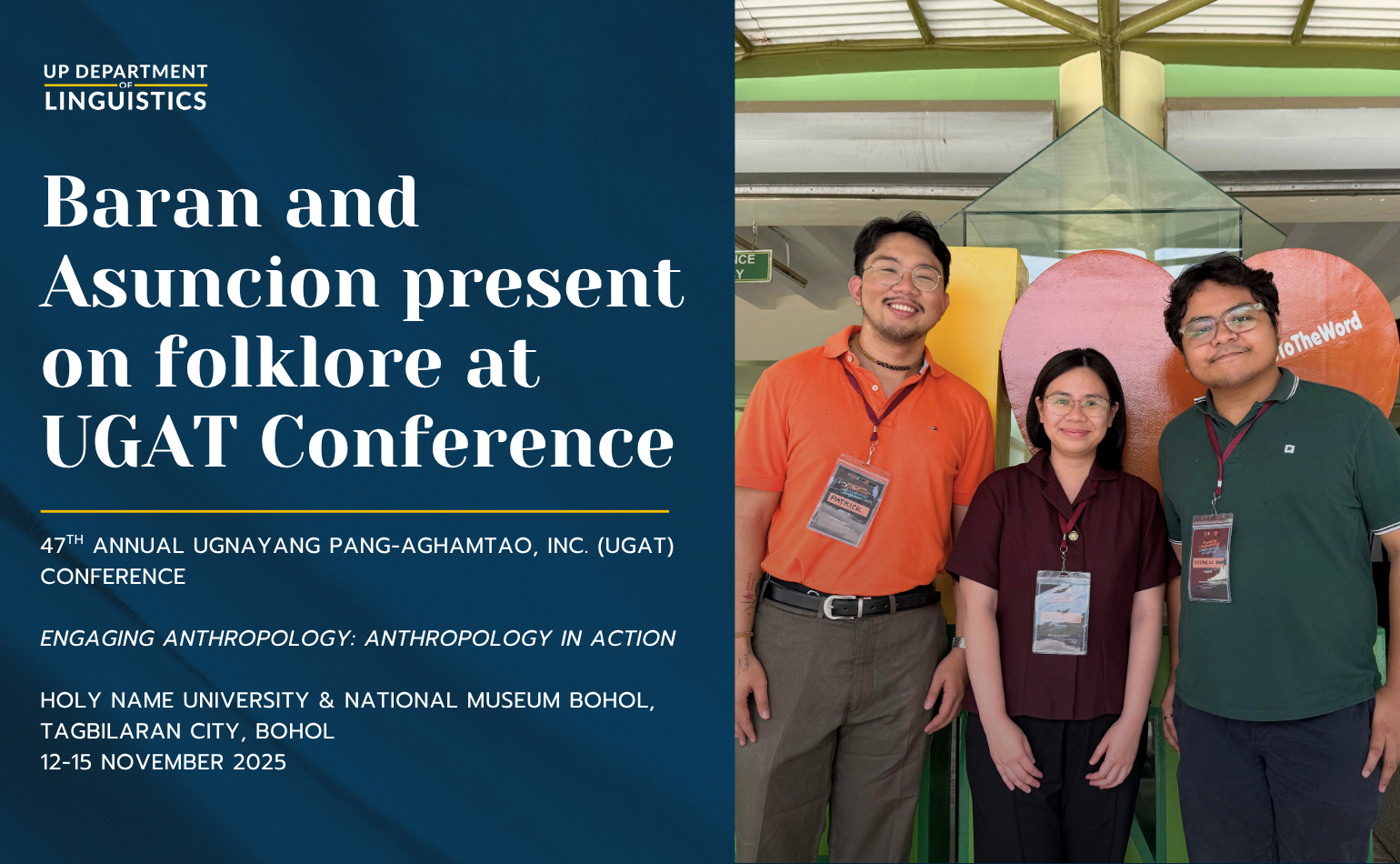
Inst. Vincent Christopher A. Santiago will present “Notes on the Kapampangan Culinary Lexicon” on 22 March at the First International Conference on Kapampangan Cuisine & Food Tourism organized by the Center for Kapampangan Studies of the Holy Angel University, Angeles City. Below is the abstract of his presentation:
Notes on the Kapampangan Culinary Lexicon
This paper is composed of some preliminary research notes on the provenance and development of selected culinary terms in Kapampangan. By culinary terms, we mean words that refer to certain ingredients as well as the technologies and techniques used in their preparation and processing (Ramos, 2019, p. 26). I argue that to better understand the history and etymology of these items from the Kapampangan culinary lexicon, we must acknowledge the connections and relations Kapampangan bears to its fellow Central Luzon languages, other neighboring language groups it has come in contact with like Central Philippines (with Tagalog as the prime and proximate representative), and the other indigenous languages of Southeast Asia such as Malay. By analyzing the origins and development of terms for common ingredients such as [gan.ˈdʊs] ‘Colocasia esculenta/taro’ and [ˈŋʊː.ŋʊt] ‘Cocos nucifera/(more specifically), mature coconut with hard meat’, terms for cooking implements such as [ka.ˈlaŋ] ‘stove’ and [ˈkʊː.ɾan] ‘clay pot’, and terms associated with food preparation such as [ˈkaː.jʊd] ‘to grate, scrape’, [ˈbʊː.ɾʊ] ‘salted food as eggs, fish, shrimp, vegetables, that is kept for days before eaten’, and [ˈsɪː.sɪg] ‘to eat something sour as green mangoes, santol, or sour tamarind’, we may uncover valuable insights on Kapampangan’s place in the wider Philippine language scene and the many encounters its speakers has had with other communities throughout history.
Keywords: Central Luzon languages, culinary studies, historical linguistics
The conference poster includes more information about the talk:

Published by UP Department of Linguistics



